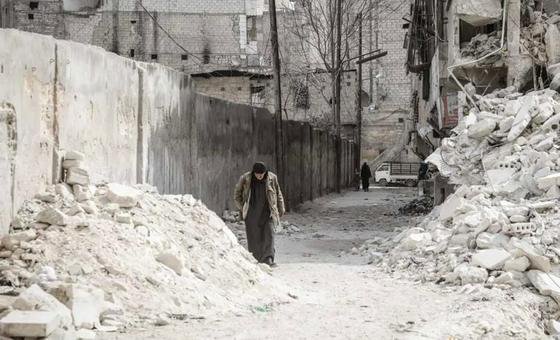Last week, the terrorist organization Hayat Tahrir al-Sham and other groups advanced on the Syrian cities of Aleppo, Idlib and Hama, sparking the fighting.
Jeremy Lawrence, a spokesman for the Office of the United Nations High Commissioner for Human Rights, told reporters in Geneva on Tuesday that civilians had been killed in attacks by Syrian security forces and terrorist groups. A large number of them are women and children.
Civilian structures are being destroyed and damaged due to this conflict. These include health centres, buildings for education systems and food markets.”
According to the UN Office for the Coordination of Humanitarian Affairs (OCHA), the situation in violence-affected areas is changing rapidly.
Jens Lark, a spokesman for the UN office, said his agency had made specific arrangements for aid operations inside Syria and across the border to Gaziantep in Turkey.
But now I am forced to stop these due to insecurity. The fighting continued and many roads were closed. But wherever possible, efforts are being made to provide relief to the distressed.
According to one estimate, around 16.7 million people in Syria were in need of humanitarian assistance by the beginning of 2024.
Civilian casualties in airstrikes
A spokesman for the UN human rights office said the December 1 attack killed 22 civilians, including three women and seven children. Another 40 people were injured.
Jeremy Lawrence said Syrian security forces had carried out several attacks in Idlib that injured civilians. A local market and five residential areas were damaged in these attacks.
He appealed to all parties to the war to comply with their obligations under international humanitarian and human rights law and to ensure the protection of civilians and civilian installations.
The Syrian Commission of Inquiry warned in a statement on Tuesday that the brutality of the past year must be avoided, otherwise Syria could go down a new path of brutality.
Burden on health services
The World Health Organization’s (WHO) representative in Syria, Christina Bethke, said there was intense pressure on health and care workers in Aleppo and other violence-prone areas, and large numbers of injured people were being brought in.
“Thousands of injured have been admitted in the last four days…Doctors and nurses are working tirelessly to save lives despite risking their lives and that of their families. “Instead of running away, they decided to stay there.”
Citing information from the Syrian capital, Damascus, he said insecurity and restrictions have forced about 65 non-governmental organizations to close their operations in Aleppo and Idlib, which has either increased the burden on health centers or cut off services. There is a standstill.
Worrying situation
Syria’s health system has been badly damaged by the ongoing violent conflict for the past 14 years. The United Nations Health Organization has warned that public health concerns are deepening amid the current crisis.
Overcrowding in shelters increases the risk of water-borne diseases and outbreaks of respiratory diseases.
Syria experienced a large-scale cholera outbreak in 2022–2023, severely affecting Aleppo and Idlib. Due to the 2023 earthquake, water and sewerage systems are already very weak. Many Syrian families are repeatedly forced to flee their country.
At the same time, nearly half a million people have sought refuge in Syria over the past two months due to the violent conflict in Lebanon, but renewed violence in northwest Syria has forced them to become displaced again.

